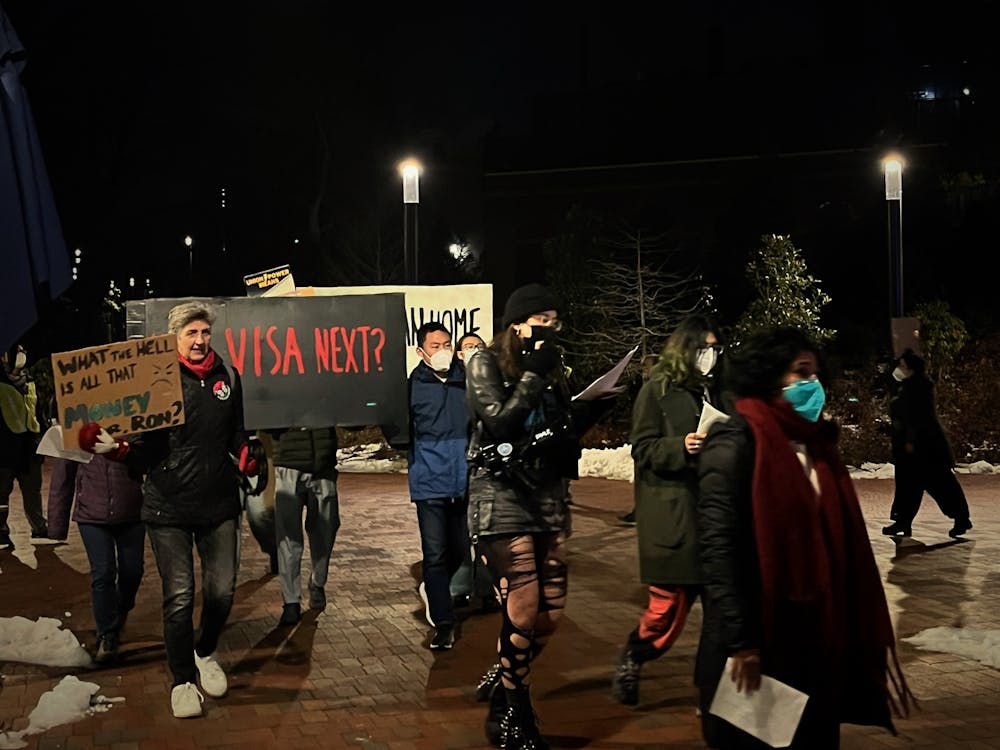The University is offering for the first time a new class called "Global Social Change and Development Research Practicum," which will allow undergraduate students to participate in an ongoing research project by the Department of Sociology.
The students taking the class will be assisting the Global Social Protest Research Working Group, which is part of the interdisciplinary Arrighi Center for Global Studies, in its study and analysis of recent surges of civil strife around the world.
"Eventually in the class. . .our goal is to produce a research grant for the National Science Foundation," Professor Beverly J. Silver, who is teaching the class this semester, said in an interview with The News-Letter.
According to Silver, a professor in the Department of Sociology, the research students will be working on is being conducted by faculty members as well as graduate students in the Arrighi Center. It builds on research that Silver previously conducted in the 1980s and 1990s.
"I had been gathering a collection of labor unrest events from newspapers around the world from 1870 to 1996 but then it got very quiet, so for various reasons I stopped doing the data collection, but I kept saying when it gets to the point when something starts happening I'll start up again," Silver, whose work largely focuses on patterns of social turmoil, explained.
That point turned out to be in 2011, a tumultuous year which brought with it international waves of social uprisings, as millions, from Wall Street to the Middle East, took their frustration to the streets.
The purpose of the research in its current form is to shed light on the causes of the uprisings and thus potentially predict when and where incidents of civil unrest may resurface. To do so, according to Silver, requires not only a close examination of the recent protest events, but also a comparison between the present wave of global social unrest and major waves of global social unrest in past centuries.
"By trying to understand what the demands being raised up by these [protest] movements, we can see certain pattern emerging," Silver said. "That begins to give us a lens on what kind of impasses are we heading for, socially, politically, globally and what kind of solutions might be wanted or needed."
According to Silver, the class is an interim stage in a series of classes designed to help students gain the research skills required for the new Global Social Change and Development Track (GSCD), which is a research-oriented program allowing students to double major in Sociology and International Studies.
The class, which is part of the track's curriculum, is designed for students who have already mastered some basic research skills, but who also have a desire to advance those skills. The students are currently being exposed to the theoretical concepts related to the project, and throughout the semester will become more involved with research design, proposal writing and data collection.
Not surprisingly, one of the goals of the class is to help students who wish to get involved in the research of the Arrighi Center develop the necessary skills. Established in 2012, the center, which focuses on international social issues resulting from globalization, has already seen several attempts to integrate undergraduate students in its research groups. No previous attempt however, has been as systematic as the current one.
"In the class the students learn how to become members of the research team," Professor Sahan Savas Karatasli, who is the co-coordinator of the Global Social Protest Research Working Group research, explained. "It's real. . .It’s not about the grade."
The undergraduate students participating in the research through the class also agree as to the importance of the work being done, and said they receive satisfaction from their efforts.
"The class is increasingly motivating as we will get to contribute more and more to the research, and see our knowledge put to good use and our contributions making a difference," sophomore Naomi Bouchard-Gordon, who is taking the class this semester, wrote in an email to The News-Letter.
"It is a valuable opportunity to get to know Hopkins professors very well and contribute to real, ongoing research," she added.
Only a few weeks have passed since the beginning of the semester, but the initial results indicate that from the point of view of the faculty, the sense of benefit seems to be mutual.
"The students are getting out of it [the class] a serious formal professional level of research experience and we are getting out of it their insights," Silver said.




